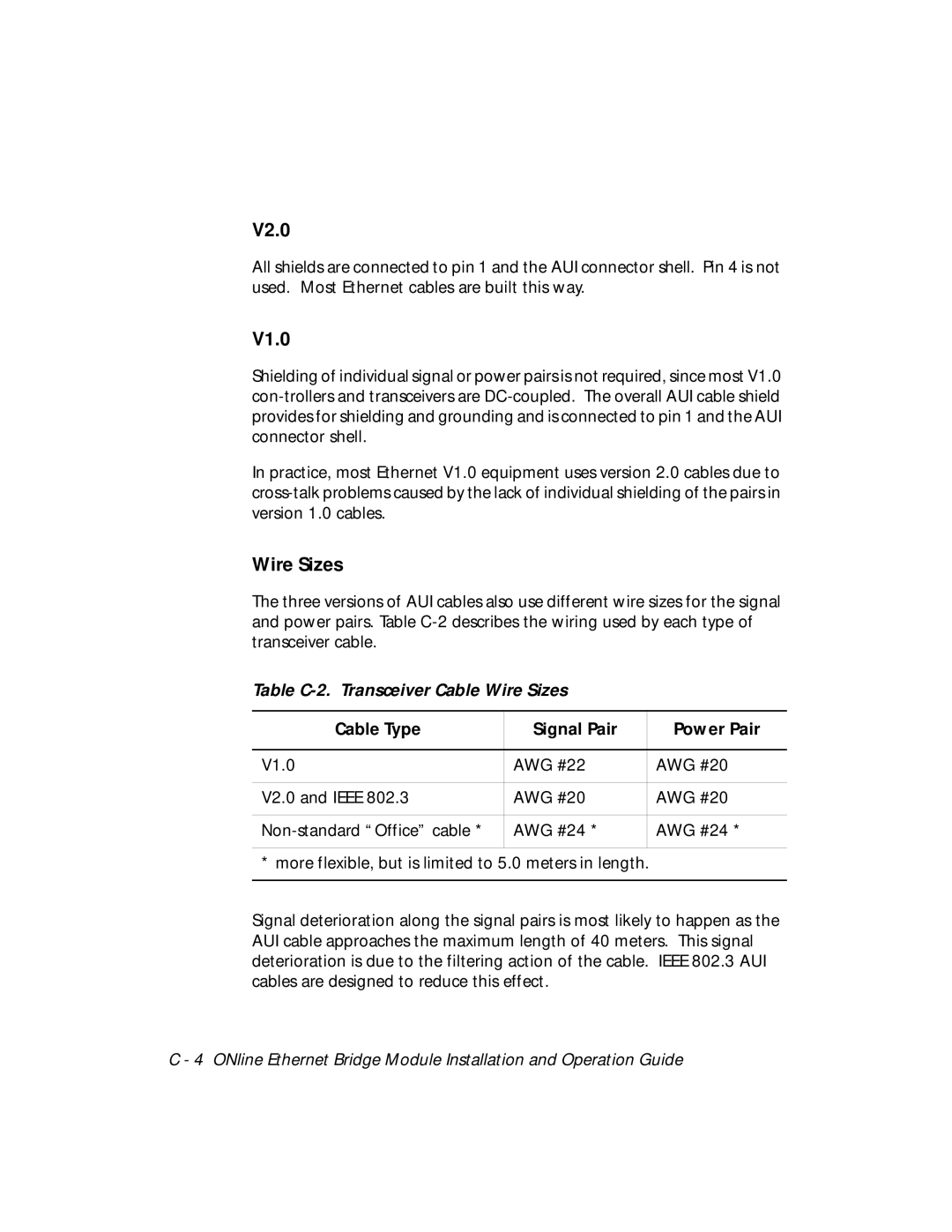V2.0
All shields are connected to pin 1 and the AUI connector shell. Pin 4 is not used. Most Ethernet cables are built this way.
V1.0
Shielding of individual signal or power pairs is not required, since most V1.0
In practice, most Ethernet V1.0 equipment uses version 2.0 cables due to
Wire Sizes
The three versions of AUI cables also use different wire sizes for the signal and power pairs. Table
Table C-2. Transceiver Cable Wire Sizes
Cable Type | Signal Pair | Power Pair |
|
|
|
V1.0 | AWG #22 | AWG #20 |
|
|
|
V2.0 and IEEE 802.3 | AWG #20 | AWG #20 |
|
|
|
AWG #24 * | AWG #24 * | |
|
|
|
* more flexible, but is limited to 5.0 meters in length.
Signal deterioration along the signal pairs is most likely to happen as the AUI cable approaches the maximum length of 40 meters. This signal deterioration is due to the filtering action of the cable. IEEE 802.3 AUI cables are designed to reduce this effect.
C - 4 ONline Ethernet Bridge Module Installation and Operation Guide
